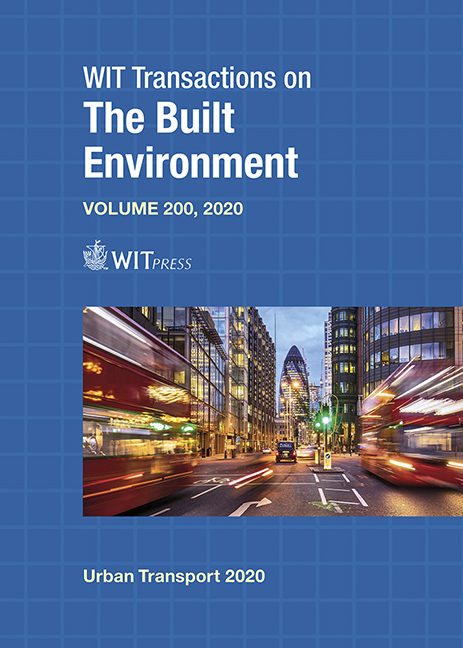CONVENIENCE OF RUNNING-GEAR HEALTH MONITORING SYSTEMS TO REDUCE UNAVAILABILITY IN METROPOLITAN RAILWAYS
Price
Free (open access)
Transaction
Volume
200
Pages
10
Page Range
25 - 34
Published
2020
Paper DOI
10.2495/UT200031
Copyright
WIT Press
Author(s)
RICCARDO LICCIARDELLO, ALESSANDRO SAPIENZA, JUAN MORENO GARCÍA-LOYGORRI, JULIÁN MARTÍN JARILLO, JOSÉ ANTONIO CHOVER ÁLVAREZ-MONTESERÍN
Abstract
Condition monitoring of the running gear of metro trainsets has been receiving increasing interest in recent years due to its potential for cost reduction and safety assurance. In fact, condition-monitoring systems (CMS) may be used (a) for the early identification of component faults (health monitoring), and (b) for in-service load monitoring. This paper describes the part of the research work performed in the SHIFT2RAIL-funded RUN2Rail project addressed to use (a). The focus is on the exploitation of the CMS to reduce the unavailability of trainsets and/or of service disruptions. This fits into the current general trend for railways towards condition-based maintenance (CBM) of assets, which has become a sector-wide need. Various technologies are available or under development for this purpose. It is assumed here that monitoring of health indicators is performed on a number of wheelsets, gearboxes and suspension elements of a case study trainset type of Metro de Madrid’s fleet. The convenience of installing, or not, the systems is assessed based on the observed component failure rates, as input to a bespoke fault-tree analysis (FTA) approach. The probability of occurrence of events that may lead to trainset or service unavailability is taken as top event of the fault tree; it is calculated with different assumptions regarding the probability of detection (POD) of the monitoring systems and the probability that a given component fault will generate unavailability. The corresponding variation of unavailability costs (with/without CMS) is quantified through appropriate penalty costs. The main results are the methodology per se, with indications of which indicators should be monitored as an input to this type of convenience assessment. The method and the results are valuable for metropolitan railway operators in assessing the convenience of adopting condition monitoring systems in their new or existing rolling stock.
Keywords
condition monitoring system (CMS), health monitoring system (HMS), metro, railway, operating costs, unavailability





